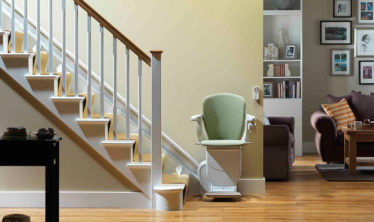3 Types of stairlifts and how to choose the right one for you
Written by Stannah
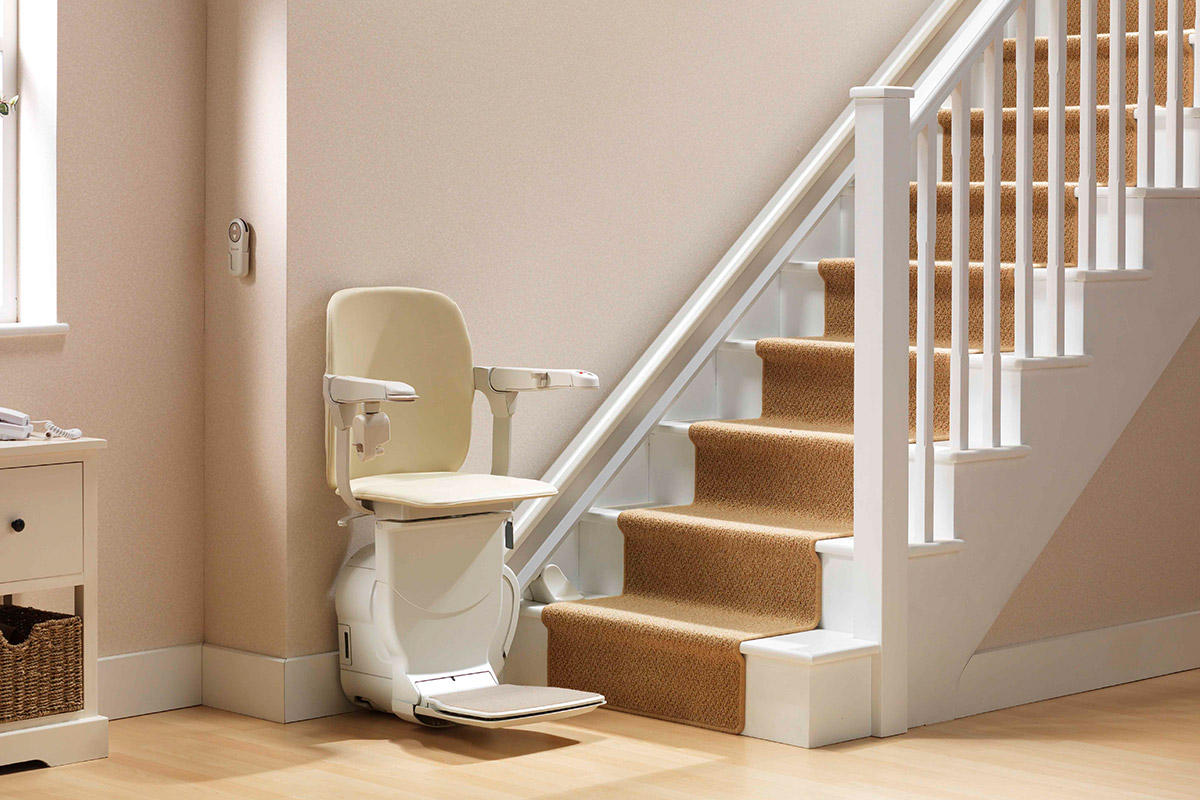
Pointing out the differences between the different stairlifts types out there is not always easy since they’re all supposed to do the same thing – to transport you safely up and down the stairs.
But if you look more closely at some of these stairlifts’ features, the materials used to manufacture them, and the stairs they are designed for, we can certainly tell them apart more quickly.
To make life easier for you, we’ve taken a closer look at some of the things that allow us to differentiate the different types of stairlifts, like their rail, their main features and how a stairlift is installed. So let’s get started.
1. Different Types of Stairlifts
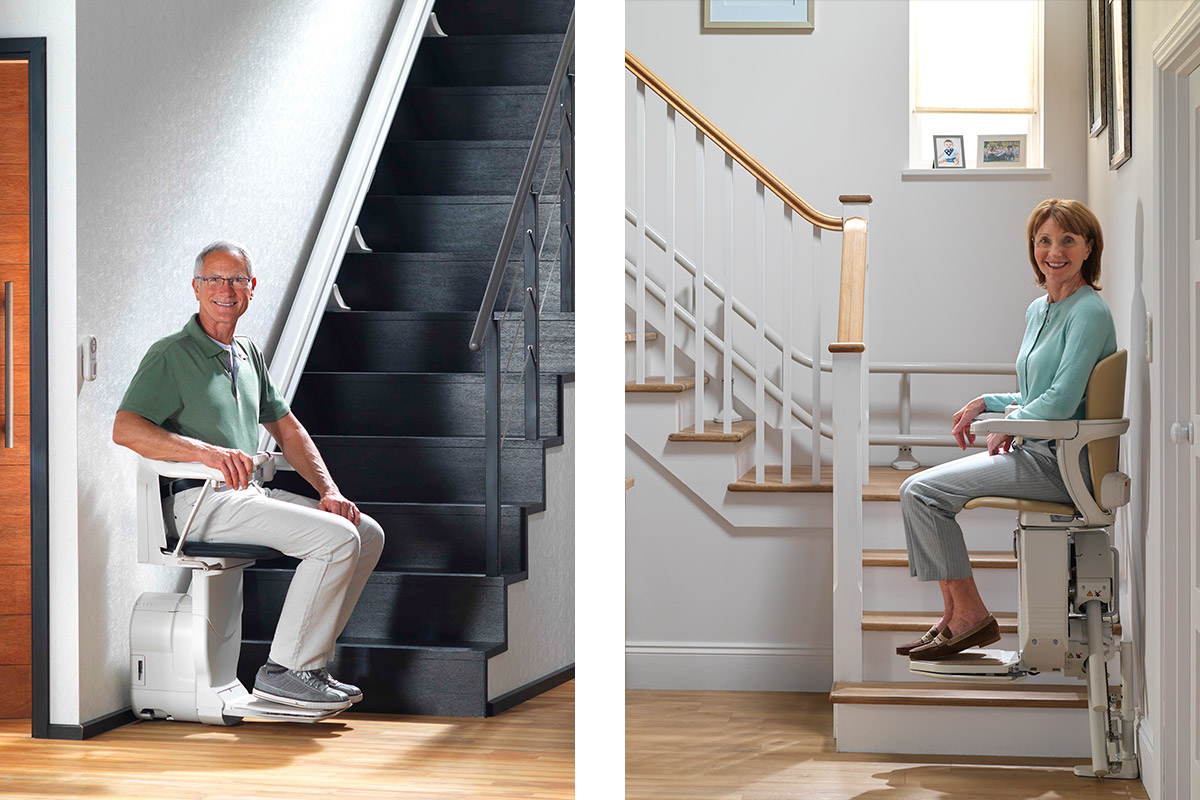
There are three types of stairlifts – straight, curved and outdoor. And they are defined this way precisely because of the rail on which they travel, which is either straight, curved or designed for outdoor staircases.
1.1 Straight stairlifts
Straight stairlifts are perhaps the type of stairlift that you see more often. They feature a simple design and are made for straight-run staircases.
They can be installed on stairs of up to 12 meters in height, although most staircases are usually shorter than 12 meters.
You can always cut the rail to your staircase’s precise length if need be. Usually, straight stairlifts can be re-used and installed on stairs other than those for which they were designed in the first place, but that must be done by a professional installer.
1.2 Curved stairlifts
Unlike straight running ones, curved stairlifts are designed for staircases with turns and bends with complex designs.
As the name suggests, bespoke curved stairlifts are usually designed for a specific staircase and feature the stairs’ exact measurements and curved designs. Because they’re made to measure, they are typically more expensive and take longer to manufacture.
1.3 Outdoor stairlifts
This type of stairlift is designed especially for outdoor staircases so you can access backyards, gardens, and entryways for gardens.
Their durable metal rails and robust plastic seats can withstand constant exposure to heat and cold or wet conditions. They also come with a protective cover and a key lock system for added security.
2. Types of seats
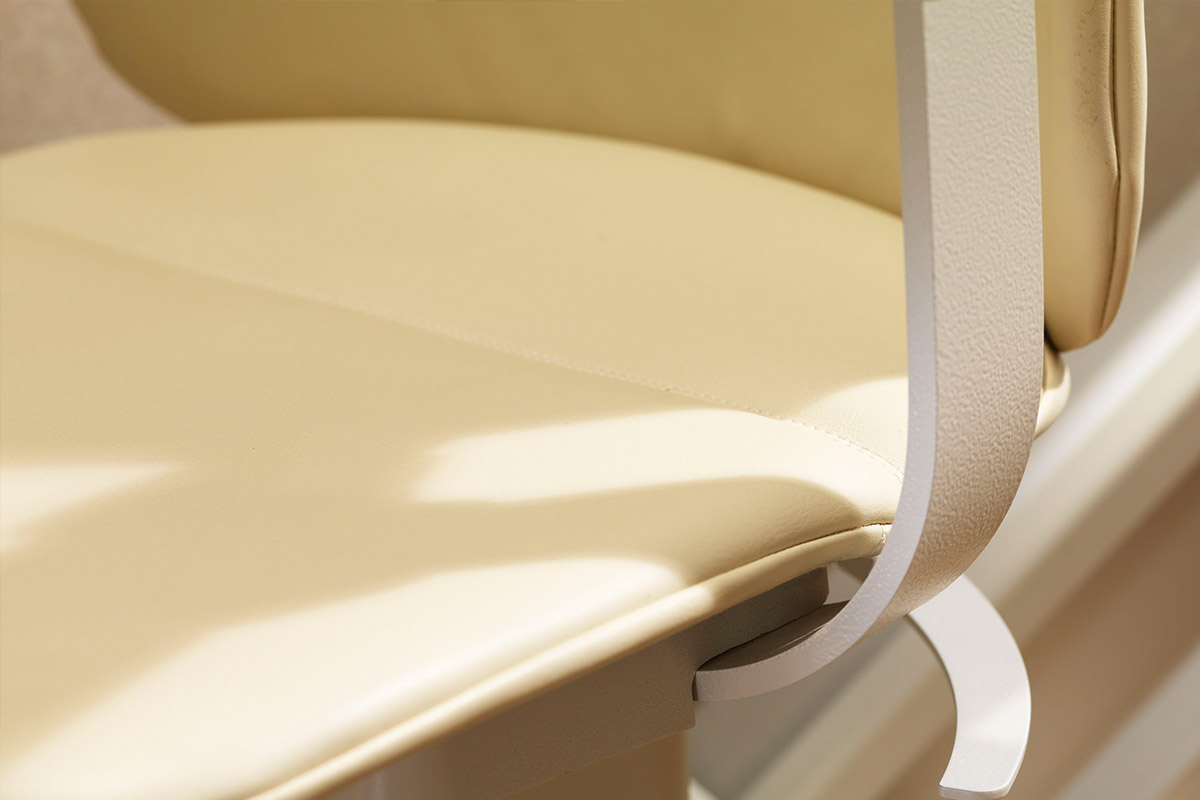
You can also tell different stairlifts apart by looking at their seats. When choosing the right type of stairlift based on its seat, look for comfort, safety and its folding mechanism.
Here are some common types of seats:
- Swivel seats: they allow users to get out of the stairlift with their feet planted on an even surface instead of the stairs. Most companies offer a manual or powered swivel mechanism.
- Armrests and footrests: stairlifts come with armrests and footrests for added safety and comfort. Some brands may offer powered footrests so it’s easier to fold when the stairlift is parked.
- Folding seat: stairlift seats can usually be folded up when not in use. The fact that they can be so easily folded up helps to reduce space on the stairs and avoid any potential tripping hazards for people that wish to use the stairs.
3. Types of rails
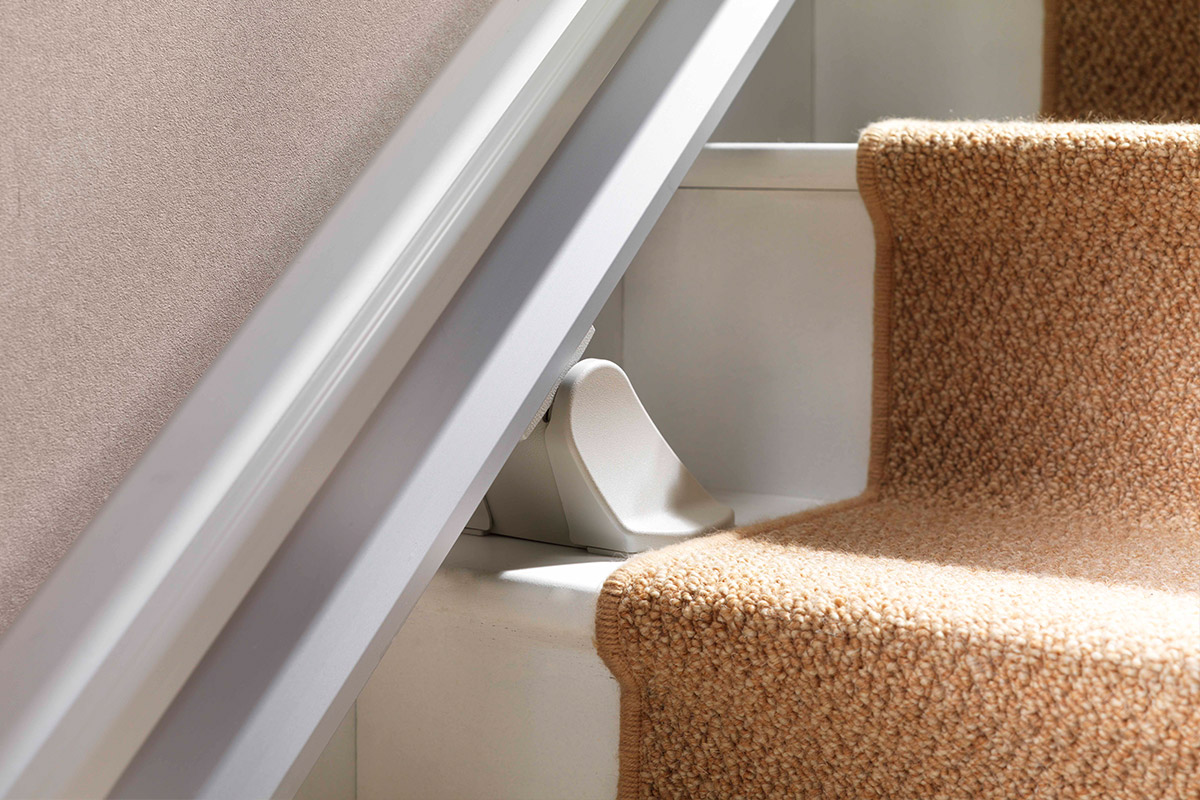
The rail is where the chair moves when going up and down the stairs. So, choosing the right rail and how it will fit on your stairs is one of the things to consider when looking for a stairlift.
There are three types of rails: straight, curved and outdoor. As we said before, the type of rail will depend on the shape of your staircase:
- for a straight staircase, we’d choose a straight rail;
- for curved stairs, a curved rail;
- and for outdoor staircases, a straight outdoor rail.
3.1 Straight rail
A straight rail is the most basic type of rail that you can find; they’re usually cut to the specific length of your staircase. The materials they are made of will also influence their durability, so they’re usually made of scratch-resistant, anodized aluminium.
When installing a straight rail, you must consider the head clearance and the stairs’ width, which should be at least 72 cm wide.
As long as your stairs have sufficient width and head clearance, you shouldn’t have any problems installing a straight stairlift.
3.2 Stairlift with retractable rail or powered folding option
A stairlift with a retractable rail feature, also known as a hinged rail, is the perfect solution for straight staircases with obstructed landings at the bottom.
The rail folds up and down to clear space at the bottom of the stairs. So, when you get up from the chair, you can remotely send the stairlift to the upper floor, and the retractable rail will fold up and out of the way.
3.3 Curved rail
Curved rails are the most expensive but are also quite popular. If you wish to install a stairlift in a staircase with curves or intermediate landings, you’ll most certainly need a curved rail.
The design of curved rails is usually more complex because it is made to measure to handle all the turns and bends of the stairs.
That is why it’s crucial that a mobility expert does a thorough survey of your stairs, so it can take precise measurements of your stairs and order a safe, reliable curved rail for your stairlift.
Custom and modular rails
There are also a few differences when it comes to curved rails. You can usually find two types of curved rails, custom-made and modular rails.
Custom-made rails, also known as bespoke rails, are made to measure and offer a smoother ride due to their tight fit. The specific design of this rail may vary depending on the company you choose, but the most common one that you’ll find is the twin-tube design.
Modular rails are usually made of a single tube and are quicker to install. However, the ride up and down the stairs may not always be as smooth as a custom rail, but it’s still an option worth considering. Nonetheless, it is the complexity of the shape of your stairs that will determine what type of rail you may need – if your staircase has several bens and tight turns, you’ll have to weigh the cost-benefit of a custom rail.
4. Other stairlift types: platform stairlifts
Besides the three stairlift types we’ve mentioned before, there are others mobility solutions similar to stairlifts.
For example, a stairlift with a platform, also known as a stairlift with a wheelchair platform, combines the top features of stairlifts and platform lifts for wheelchair users.
A stairlift with a platform, or a wheelchair platform, is designed to help users in wheelchairs move between floors. A stairlift with the platform can come in different shapes and sizes to accommodate various staircase designs and shapes.
5. Other stairlift features
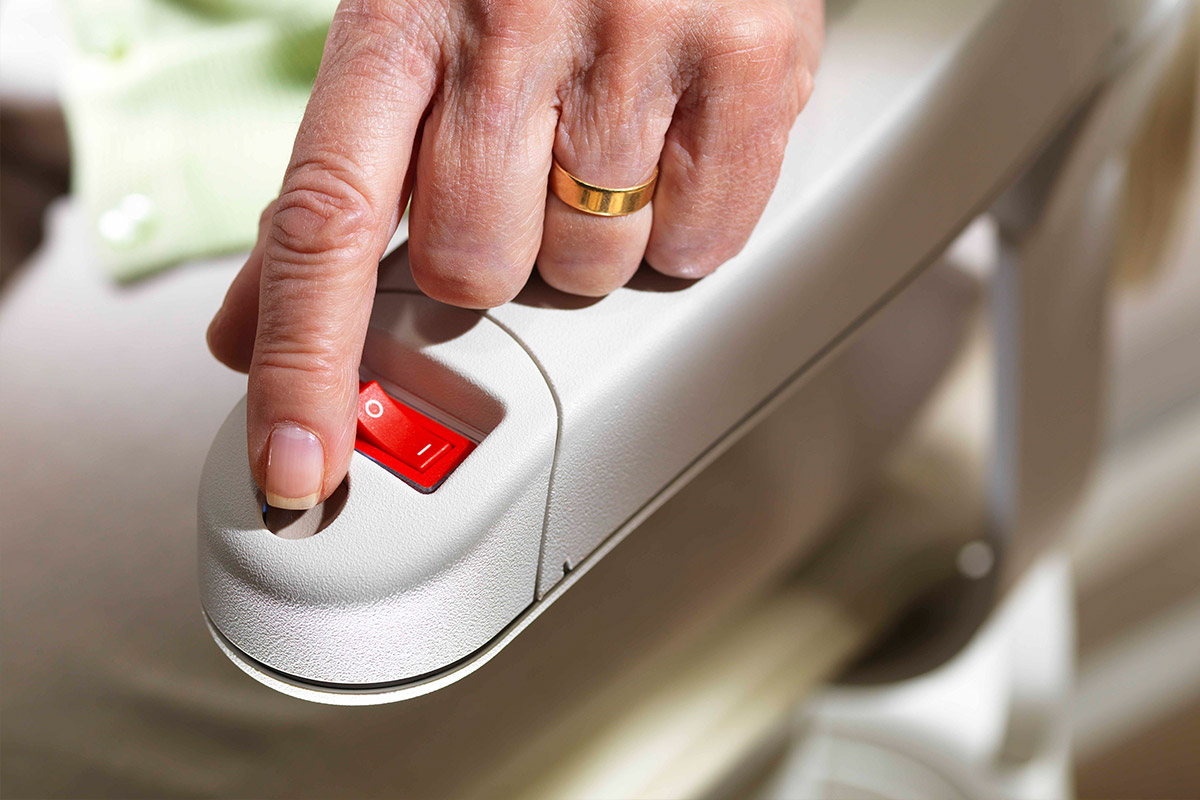
Stairlifts have many features designed to offer added comfort and safety to their users. Some features are common to most stairlift models, but others set them apart. Let’s take a look at some of them.
5.1 Safety features
The stairlifts come with specific safety features depending on their design.
- Seatbelts – they provide users with restraint and prevent accidents. They are usually easy to use, especially with issues like arthritis.
- Harnesses – these are like seatbelts for standing stairlifts. They also offer secure restraint for users.
- Obstruction detection – some devices come with electronic sensors that detect obstructing objects on the stairs. They cause the stairlift to stop moving when an obstruction is detected to prevent injuries and damages.
- Keylocks – protect the device from unauthorized use by kids and adults who need supervision.
5.2 Weight capacity
The weight capacity is something to consider when looking for a stairlift, whether for private or public use, so you know that it can safely meet all users’ physical needs.
The standard weight capacity of a stairlift is around 130 kg; although, other models can support up to 200 kg.
5.3 Controls
Stairlifts must have easy-to-use controls, so it’s easier for people with limited dexterity to use them.
Controls are usually mounted to the armrest of the stairlift, so you can simply push the control, and the stairlift will move in the direction you want it to go.
Remote controls, or controls mounted on the wall, are also quite handy to call the stairlift when it’s parked on a different floor.
5.4 Charging and Power
Most stairlifts are powered by a battery charged automatically from an outlet near the stairs.
So if there’s a power cut, the batteries take over, and the stairlift will keep going until you reach your destination. That’s why it is so important to park the chair near its charging point so the batteries are always charged.
6. Pricing
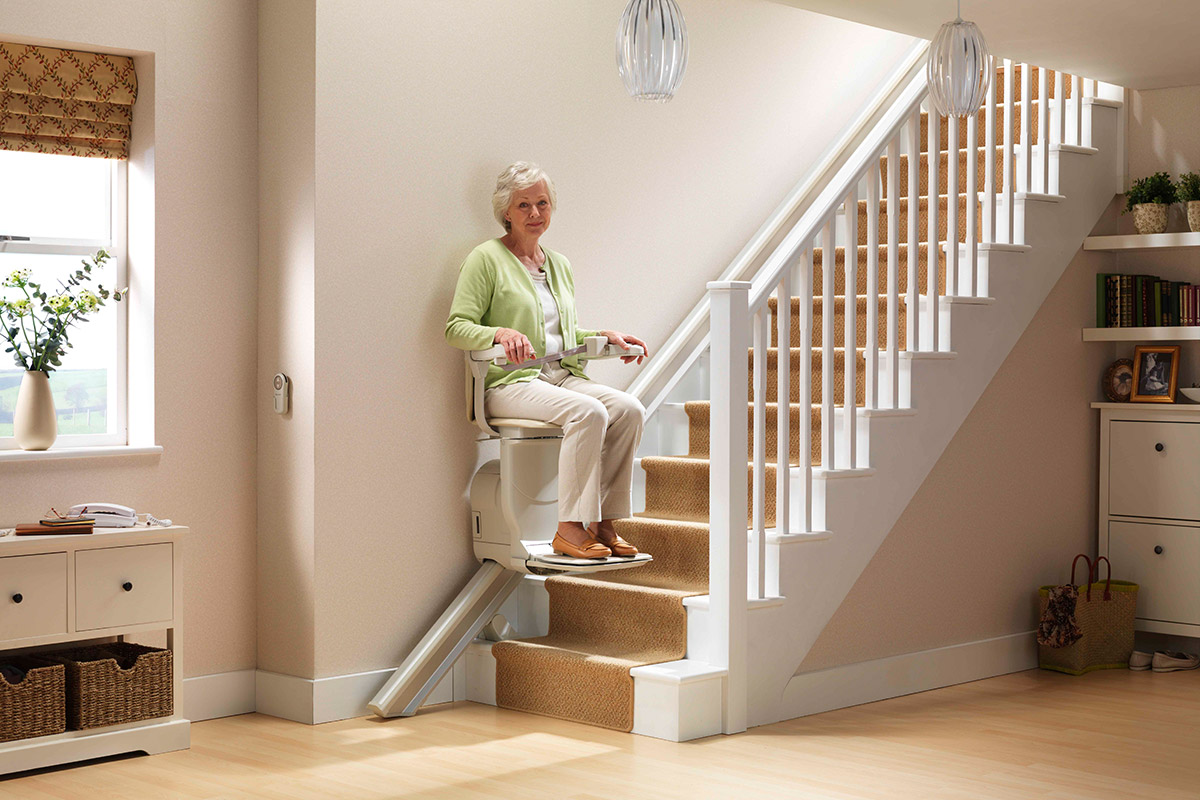
The cost of a stairlift will vary depending on the stairlift model, the type of rail, additional features and the company you choose.
As we mentioned before, curved stairlifts are usually more expensive than straight ones. Other aspects that may influence the pricing include:
- How long the rail needs to be;
- If your stairs are outdoors or indoors;
- How many steps are in the flight of stairs;
- If there are any doors where the stairlift would need to go.
6.1 Used and refurbished stairlifts
Used and refurbished stairlifts are usually cheaper option. However, you need to be careful when choosing a used or refurbished stairlift, so you know for sure that it will fit your stairs and your mobility needs.
While considering this, remember that a second-hand stairlift will never fit as well as one designed specifically for your staircase. So when installing a used stairlift, always make sure that it is done by a professional installer.
Companies that sell second-hand or refurbished stairlifts usually offer installation services, so if you decide to go with a used stairlift is best to buy from a company that also provides installation services.
7. How to choose the right stairlift
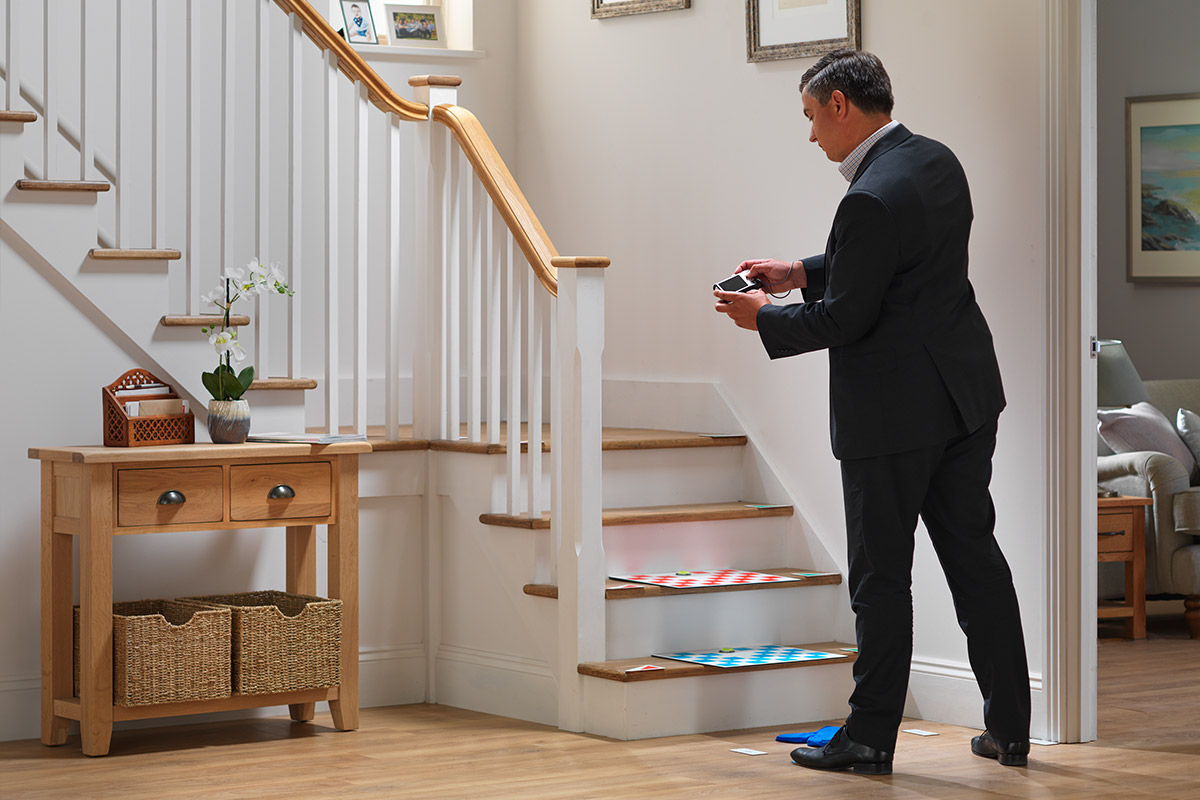
Choosing the right stairlift model, its rails and even the additional features that can best suit your needs can be quite tricky.
So, make sure you stay well-informed and know all your options. One of the best ways to do it is to talk to a mobility expert that can advise you on the best stairlift for you. The work behind Stannah stairlifts ensures that each unit is crafted with precision and care, making them comfortable, safe, and very easy to use.
At Stannah, we offer you a free stair survey and help you find a stairlift that can fit your mobility needs and your staircase requirements.


